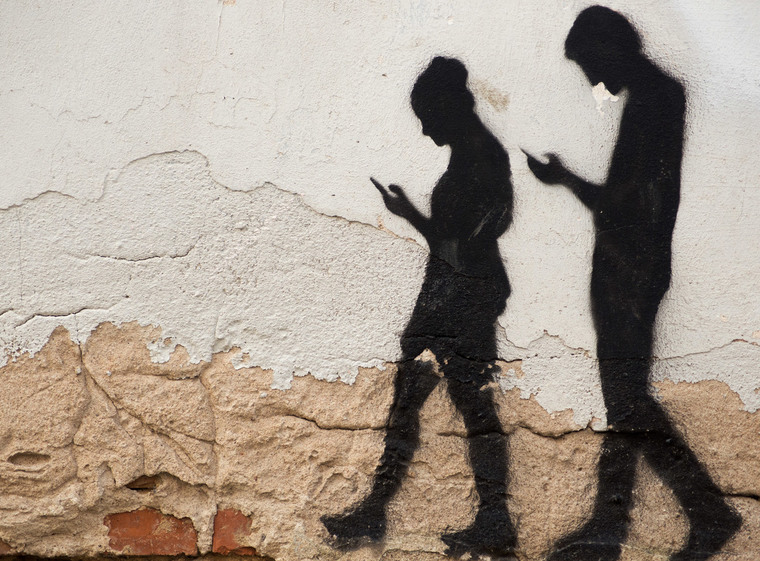It is late June, and summer vacation is in full swing for school-aged children. Younger kids are at home on the couch, kicking a ball around at the playground with friends, diving into summer swimming lessons, or engaging in fun summer-camp activities. Older children need less supervision and may find themselves with a less-structured summertime. While some teens take summer jobs, take classes at local community colleges, or do volunteer work to boost their college applications, others are left to their own devices. Their method of transportation may vary; some walk around town, while others are lucky enough to have their own cars. The one near-universal constant among this young adult population is that where they go, their phones will follow.
Our Phones Are a Constant Distraction
Smart phones and new drivers are a dangerous combination. Having a smart phone in a moving vehicle is an invitation for distracted driving. According to the National Highway Traffic Safety Administration, a federal automobile safety agency, distracted driving is defined as any activity that diverts the driver’s attention from the task of driving. This includes activities such as:
- Eating
- Drinking
- Talking
- Adjusting the radio or other controls
- Talking or texting on a cell phone
Texting is especially dangerous, as it takes a driver’s eyes off the road for several seconds at a time. This is plenty of time for an unexpected obstacle to appear or for a driver to drift into oncoming traffic. [1]
According to new research by Cambridge Mobil Telematics, more than half of all car crashes in recent years have involved some form of distraction due to a mobile phone. This danger is especially present among young drivers. All teenagers are relatively inexperienced drivers, more likely to crash their vehicles in the first place. In addition, they are at an age where they are uniquely tuned-in to social dynamics and are more likely to respond to phone calls and notifications while driving. On average, 11 teenagers die every day in the United States as a result of texting while driving. This is far too many children dying unnecessary deaths. [2] Worse, the accidents that claim these young lives often also harm or kill other drivers who were not involved in the culpable activity of distracted driving.
Distracted Walking Is Also Dangerous
You might see this data and think that the best solution is to simply revoke teenage driving privileges. If they can’t drive a car, they can’t be distracted drivers. However, even pedestrians are at risk of injury due to distraction by mobile devices. According to research conducted at the University of British Columbia, distracted pedestrians walk slower and are less steady on their feet. Researchers studied a busy Canadian intersection and discovered that more than one-third of pedestrians were distracted by their cell phones in some way. Among the sources of distractions observed among phone-wielding pedestrians were:
- Texting
- Reading
- Listening (i.e., to music or podcasts)
- Talking on the phones
These distracted individuals had more trouble maintaining their walking speed and gait, and they took longer to cross the intersection, thus increasing the potential for vehicle-on-pedestrian collisions. [3]
Distracted walking is becoming more and more common, and it exposes pedestrians to a variety of injuries. Distracted walkers can suffer various forms of injury, ranging from the moderate to the severe:
- Tripping
- Sprains or strains
- Cuts or bruises
- Fractures or broken bones
- Concussions or brain injuries
- Spinal cord injuries
- Death
In addition, a distracted driver can be responsible for injuring someone else on the road, either a driver, cyclist, or fellow pedestrian. When distracted drivers encounter distracted walkers, a distracted driving injury is much more likely to occur. In 2008, over 1,000 people found themselves in an emergency room as a result of an injury sustained while texting and walking.
Distracted driving and distracted walking are clearly hazardous, but as long as cell phones remain ubiquitous these threats will remain. There are many things we can to improve the safety of pedestrians and drivers alike. Teens can take steps to keep their peers safe by taking responsibility for their own attention while walking and driving, and by reminding their friends to keep their focus on the road. Parents can lead by example by never using their cell phone while driving or walking and by talking to their children about the dangers associated with cell phone use. Teachers can do their part by using their platform to spread the word about the hazards of distracted driving to teens and coworkers. We can all take responsibility the safety of ourselves and those around us. [4]
If you or a loved one has been injured by a distracted driver or pedestrian, move yourself out of the street and away from the danger of oncoming traffic. Next, seek appropriate medical attention to address and document the injury. Document the scene of the incident with pictures if possible and reach out to any potential witnesses who might be willing to make a statement. Call law enforcement so that an official report of the incident can be filed. Finally, reach out to a personal injury lawyer to make sure you understand your rights as an injured party.
[1] https://www.nhtsa.gov/risky-driving/distracted-driving
[3] https://www.sciencedaily.com/releases/2018/07/180731125546.htm


